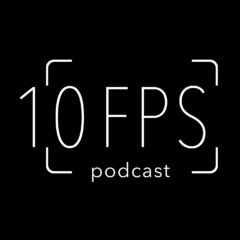Judy Walgren, The Future of Photojournalism: Ethics, Care, and Community
Insights from Judy Walgren’s interview on the “10 Frames Per Second” podcast
🎙️ About the Podcast Episode
- Show: 10 Frames Per Second – a podcast about photojournalism by photojournalists, for everyone.
- Hosts: Joe Giordano & Molly Roberts.
- Guest: Judy Walgren, Pulitzer‑prize winning photojournalist, professor at Foothill College, co‑author of Critical Photojournalism: Contemporary Ethics and Practices (with Tara Pixley).
- Release: Tuesday (new episodes drop every Tuesday on 10fps.net or any major podcast platform).
🌟 Who Is Judy Walgren?
- Career Highlights
- 14 years at the Dallas Morning News covering East Africa, India, and more.
- Director of Photography at the San Francisco Chronicle.
- Pulitzer Prize (team) for coverage of violent human‑rights abuses against women.
- Academic Role
- Full‑time faculty in the photography department at Foothill College, Los Altos, CA.
- Mentors students in community‑college settings, emphasizing ethical storytelling and self‑care.
🔍 Core Themes From the Conversation
1. Ethical Storytelling Is Not a Myth – It’s a Practice
- Objectivity Is a Myth – Judy argues that every photographer brings lived experience to a story; true objectivity is impossible.
- Fairness & Accuracy – She focuses on fairness (respectful representation) and accuracy (truthful context) rather than a hollow claim of objectivity.
- Collaborative Portraiture – Working with subjects (e.g., survivors of the Larry Nassar scandal) to co‑create images, not just “shoot‑and‑run.”
2. The “Extraction” Model vs. Relationship‑Based Journalism
| Extraction Model | Relationship Model |
|---|---|
| Fast, flash‑heavy, profit‑driven | Slow, consent‑first, community‑centered |
| Prioritizes clicks & ads | Prioritizes people’s dignity |
| Example: Direct flash in immigration courtrooms | Example: Years‑long immersion with a family before photographing courtroom moments |
3. Gender & Racial Bias in the Field
- Early career: Told she couldn’t carry heavy gear because she was a woman → Interrupted by supportive mentors (Dennis Darling).
- Ongoing: Confronting sexism, bullying, and the “male‑editor” gatekeeping that still exists in many newsrooms.
4. Mental Health & Self‑Care Are Essential
- Trauma: Covering wars in Somalia, genocide, and systemic abuse left deep emotional scars.
- Self‑Care Practices
- Pre‑assignment checklists (gear, safety, mental‑health prep).
- “DigiSec” – digital security to protect against doxxing.
- Yoga, meditation, and community support (e.g., Women Photojournalists of Washington).
5. The Rise of Gen Z Empathy
- Gen Z shows higher empathy and a willingness to question entrenched practices.
- Students demand authenticity, fairness, and ethical frameworks—pressuring the industry to evolve.
6. The Business Crisis in Photojournalism
- Corporate commodification → “Extraction” of stories for profit.
- Non‑profit & community models proposed as a sustainable alternative.
- Need for transparent licensing, copyright awareness, and fair compensation for creators.
📘 The Book: Critical Photojournalism
- Authors: Judy Walgren & Tara Pixley (MFA + PhD in Journalism).
- Key Sections
- Ethical foundations (fairness, accuracy, care).
- Technical & business skills (copyright, licensing).
- Mental‑health & safety strategies.
- Case studies & learning prompts.
- Companion Site: criticalphotojournalism.com – free resources, interview archives, and lesson‑plan templates.
🛠️ Practical Takeaways for Photojournalists & Educators
For Photojournalists
- Ask for Consent – Even in public spaces, a simple “May I photograph you?” can transform power dynamics.
- Avoid Direct Flash in Sensitive Settings – Use natural light or soft diffusers; prioritize subjects’ comfort.
- Document Your Process – Keep a journal of ethical decisions; it can protect you and your subjects later.
For Educators
- Integrate Ethics Early – Use the book’s learning prompts in freshman courses.
- Create Collaborative Projects – Partner students with community organizations for real‑world practice.
- Teach Digital Security – Include DigiSec basics (VPN, two‑factor authentication, safe file storage).
For Newsrooms
- Re‑think Assignment Timelines – Allow time for relationship building, not just “5‑minute shoots.”
- Support Mental‑Health Resources – Offer counseling, trauma debriefs, and flexible schedules.
- Adopt Transparent Licensing – Clearly explain to photographers how images will be used and compensated.
📣 Call to Action
- Read the Book – Grab Critical Photojournalism for a deep dive into ethical practice.
- Visit the Companion Site – Download free case studies and lesson plans at criticalphotojournalism.com.
- Join the Conversation – Follow the 10 Frames Per Second podcast for more stories that challenge the status quo.
- Implement One Change – Today, commit to asking consent before your next street shot.
🔗 Related Resources
- Podcast Episode: “Judy Walgren on Ethics & Care” – available on all major platforms.
- Organizations – Women Photojournalists of Washington, Photojournalism.org, National Press Photographers Association (NPPA).
- Further Reading – The Ethics of Photojournalism (University of Missouri Press), Visual Storytelling by Robert Caplin.
🎉 Wrap‑Up
Judy Walgren’s journey—from a pre‑med student to Pulitzer‑winning photographer and compassionate educator—illustrates that photojournalism can be both powerful and humane. By embracing fairness, building relationships, and caring for our own mental health, the next generation of visual storytellers can reshape the industry for the better.
Ready to make a difference? Start with a single ethical decision today.
photojournalism, ethics, critical photojournalism, Pulitzer Prize, gender bias, racial bias, implicit bias, explicit bias, mental health, self‑care, trauma, burnout, community‑engaged storytelling, collaborative portraiture, Gen Z, empathy, corporate media model, nonprofit journalism, digital security (DigiSec), online doxing, consent, power dynamics, language reform, “shoot” vs “transmit/receive”, mentorship, mentorship programs, classroom teaching, high‑school OER resources, photography education, MFA (Master of Fine Arts), art‑journalism intersection, fairness, accuracy, extraction vs relationship model, newsroom culture, sexual harassment, bullying, safety protocols, field safety, grant‑writing for curriculum development.
Podcast: Play in new window | Download
Subscribe on your preferred platform! Apple Podcasts | Spotify | Amazon Music | Android | Pandora | iHeartRadio | JioSaavn | Podchaser | Gaana | TuneIn | Deezer | Anghami | Youtube Music | RSS
